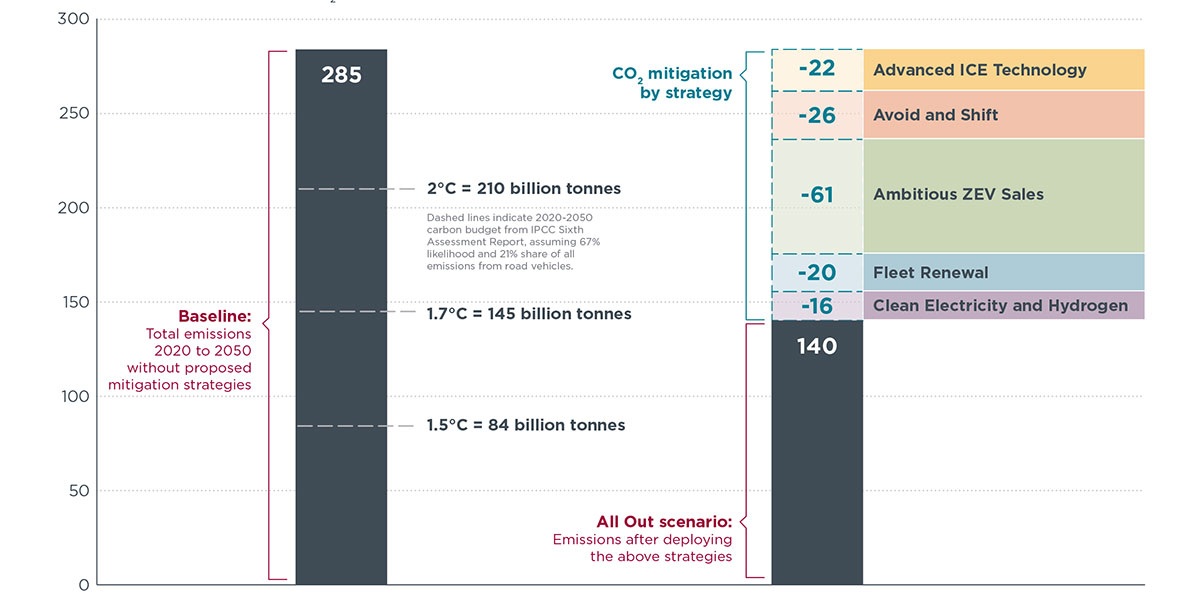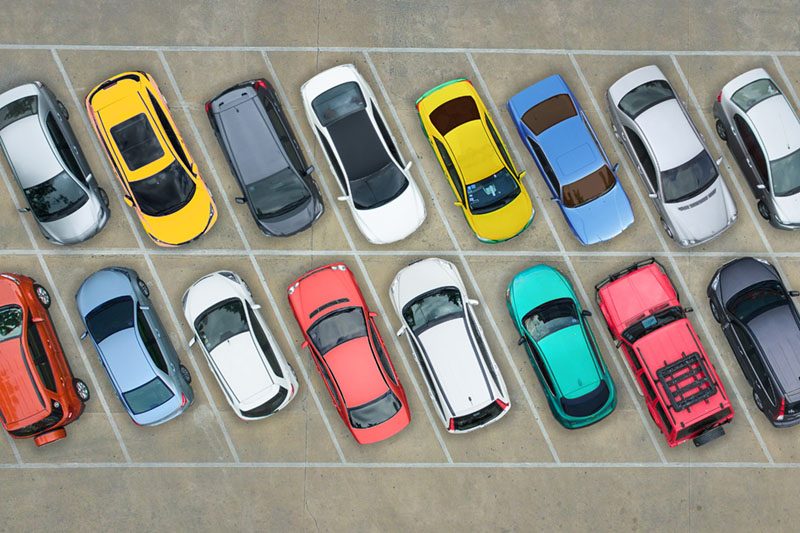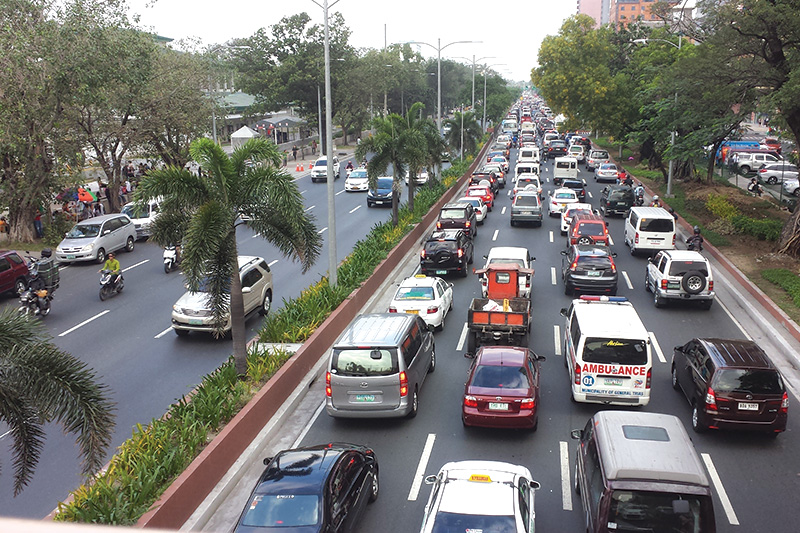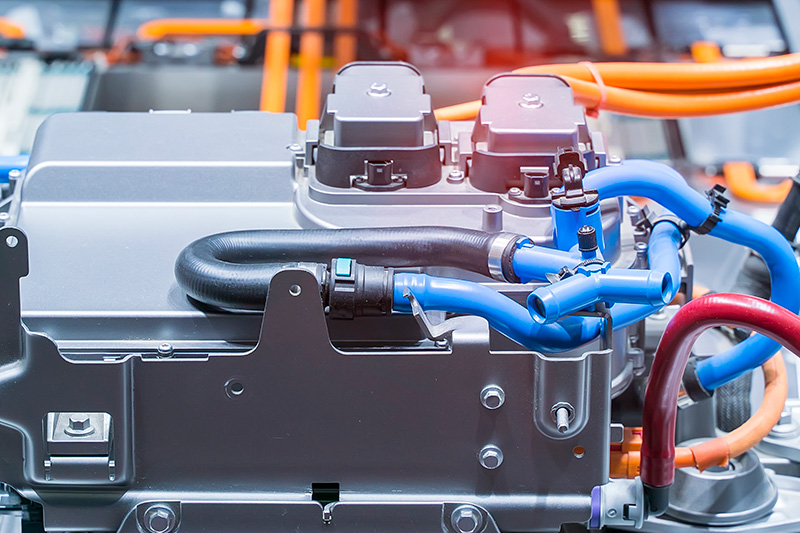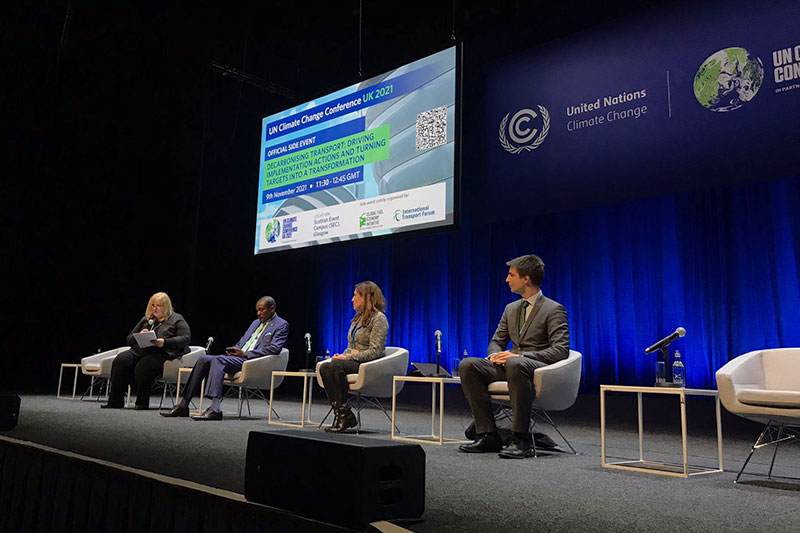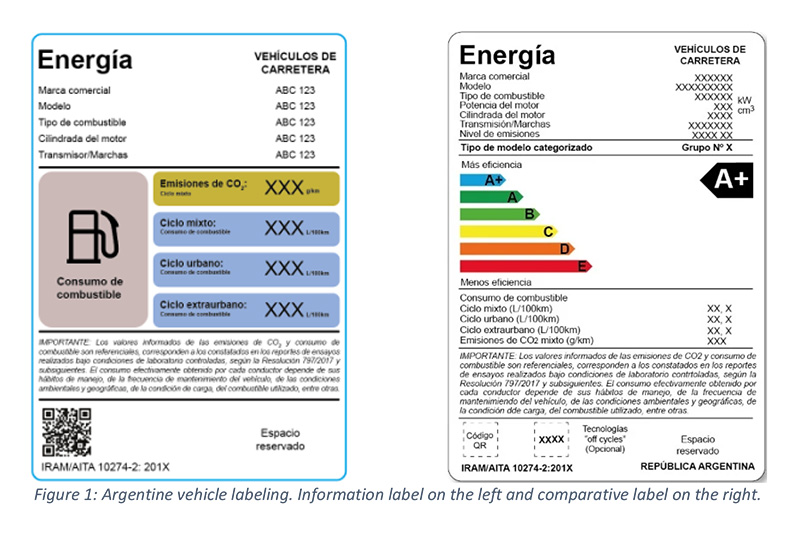New GFEI partners report on strategies to align global road transport with climate targets

An accelerated transition to electric vehicles is imperative to limit warming—combining with additional strategies can align road transport with well below 2 degrees Celsius says a new report, from GFEI partners the International Council on Clean Transportation (ICCT) and the FIA Foundation.
The report ‘Vision 2050: Strategies to align global road transport with well-below 2 degrees Celsius’ is a portfolio of ambitious but feasible policies that could put the global road vehicle fleet on a pathway compatible with limiting warming to well below 2 degrees Celsius (1.7°C) As more analysis emerges about the growing gap to 1.5 degrees, this new analysis found that the global road transport sector can play an important role in shrinking it.
"In the past two years, global progress on the transition to zero-emission vehicles has accelerated, putting a 2°C pathway for vehicle emissions within reach if more jurisdictions adopt the precedents set by leading markets," said Josh Miller, Director of ICCT’s Modeling Center and co-author of the report. "Complementing accelerated ZEV adoption with additional strategies—improving vehicle efficiency, reducing car dependence, improving freight logistics, and accelerating the replacement of old vehicles—could further reduce vehicle emissions in line with a 1.7-degree pathway."
Key measures identified and quantified beyond accelerating the transition to ZEVs. If applied in combination, the following measures could put road vehicles on track to a 1.7 degree-compliant CO2 emissions pathway:
- Accelerate the global transition to ZEVs: If major markets such as the U.S., China, Europe, and Canada were to reach 100% ZEVs for sales of new cars and vans by 2035, and for new buses and trucks by 2040, and all other countries were to follow suit within five to ten years, it would avoid 61 billion tonnes of CO2 emissions through 2050. This is equivalent to avoiding 7 years' worth of global vehicle CO2 emissions at current levels.
- Adopt the most efficient existing technologies in all combustion vehicles: Even when we accelerate the transition to zero-emission vehicles, 700 million new gasoline and diesel light- and heavy-duty vehicles will still be sold through 2045. Strong hybridization and improvements in powertrain efficiency, vehicle aerodynamics, and lightweighting for internal combustion engine (ICE) vehicles could avoid 22 billion tonnes of CO2 emissions through 2050.
- Reduce the dependence on cars in urban areas and improve freight logistics: Measures that reduce urban car travel, such as investment in public transport and walking and cycling infrastructure, together with optimizing freight logistics could avoid 26 billion tonnes of CO2 emissions through 2050.
- Replace old combustion vehicles faster: Accelerating the retirement of old combustion vehicles by incentivizing their replacement with new, more efficient, and increasingly zero-emission vehicles could avoid around 20 billion tonnes of CO2 through 2050.
- Decarbonize the electricity and hydrogen used in ZEVs: A transition to a clean electricity grid and production of green hydrogen for fuel cell electric vehicles could avoid a further 16 billion tonnes of CO2 from vehicles through 2050.
Implementing these solutions in parallel could avoid a total of 144 billion tonnes of CO2, effectively cutting road transport CO2 emissions in half cumulatively through 2050 and putting the sector on a pathway compatible with 1.7 degrees. Implementing the strategies identified at the pace required will require unprecedented cooperation within and among countries. Still, additional strategies, as well as carbon removal technologies that are under development, would be needed to close the gap to the 1.5°C target. And that depends on whether the political will exists to enact these measures.
“Even if the world were to stop selling cars and trucks tomorrow, the “locked-in” emissions of vehicles already on the road would still exceed the carbon budget for 1.5 degrees, and are only 7% lower than with the actionable solutions that we have identified”, said Arijit Sen, Researcher at ICCT’s Modeling Center and lead author of the study. “But ending all car sales tomorrow is not a solution, while the set of strategies we have identified is.”
Sheila Watson, FIA Foundation Deputy Director, said: “Transport must get its act together to address its carbon footprint and the contribution it must make to reaching the 1.5 degree global target. That means acting now to adopt more electric vehicles, improve the existing vehicle technologies, and get rid of dirty old bangers. But it also means promoting and protecting walking and cycling, and decarbonising energy sources. None of this can wait, and none of it comes first. It all must happen – and it must happen now.”
